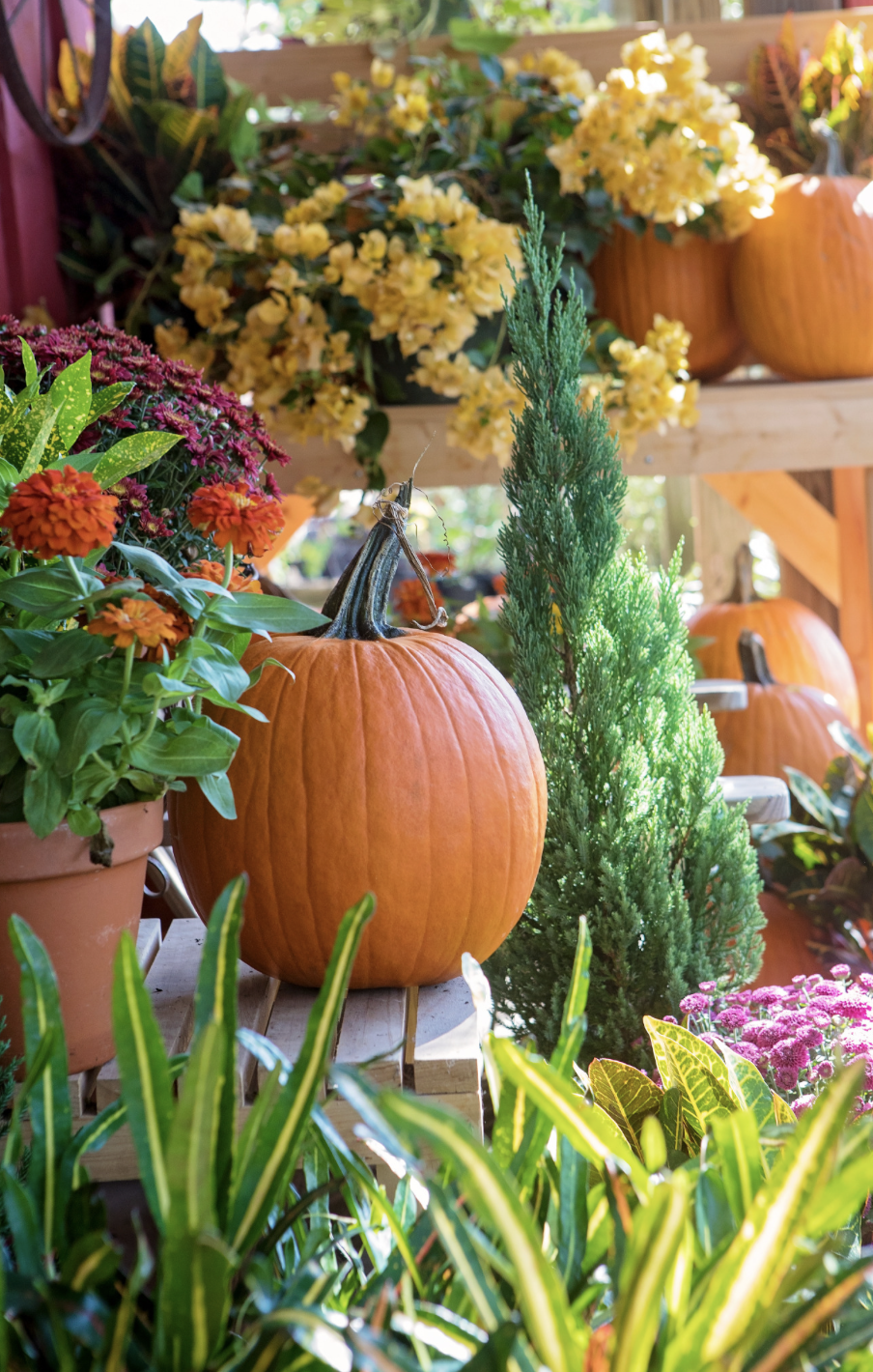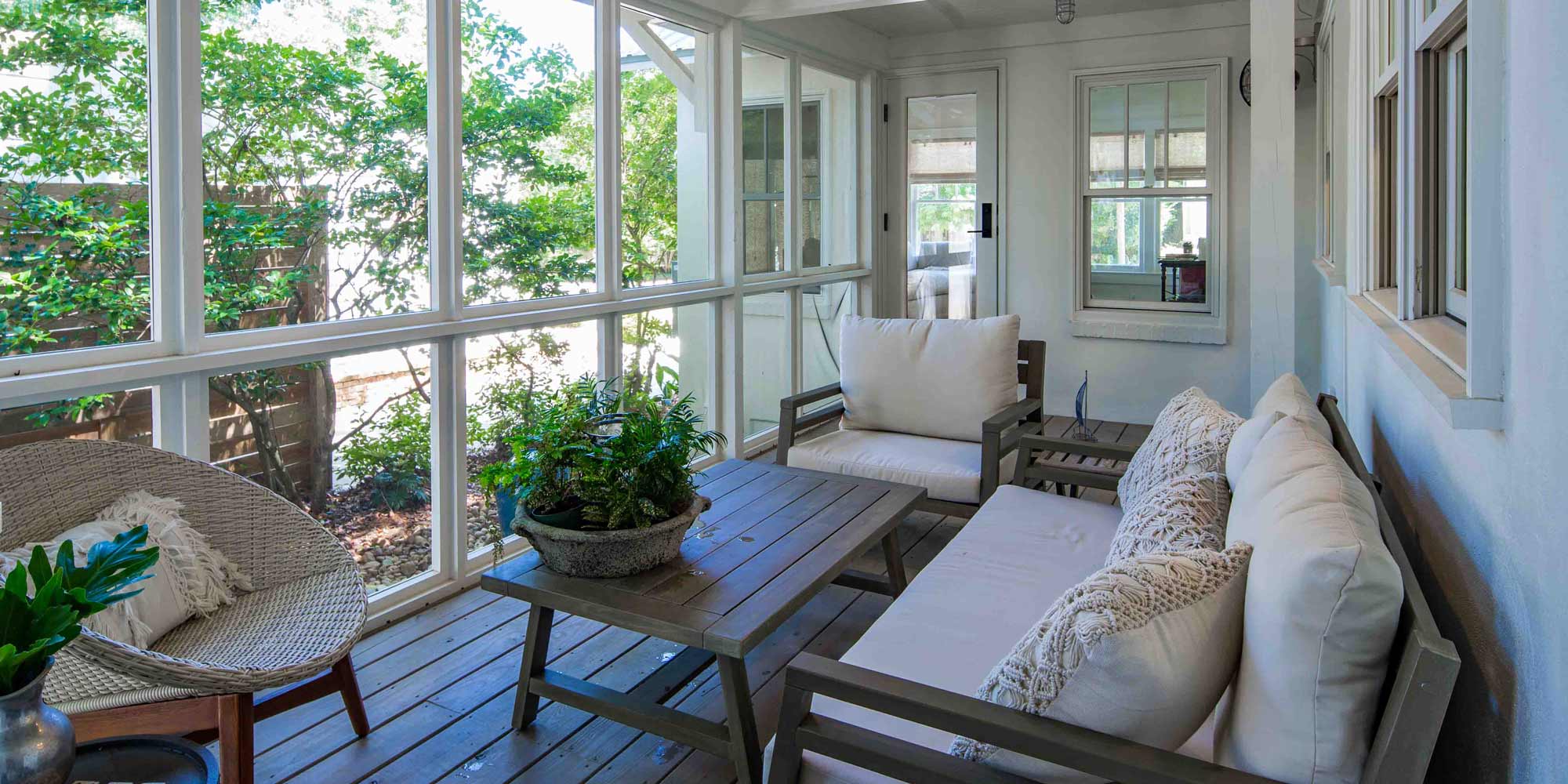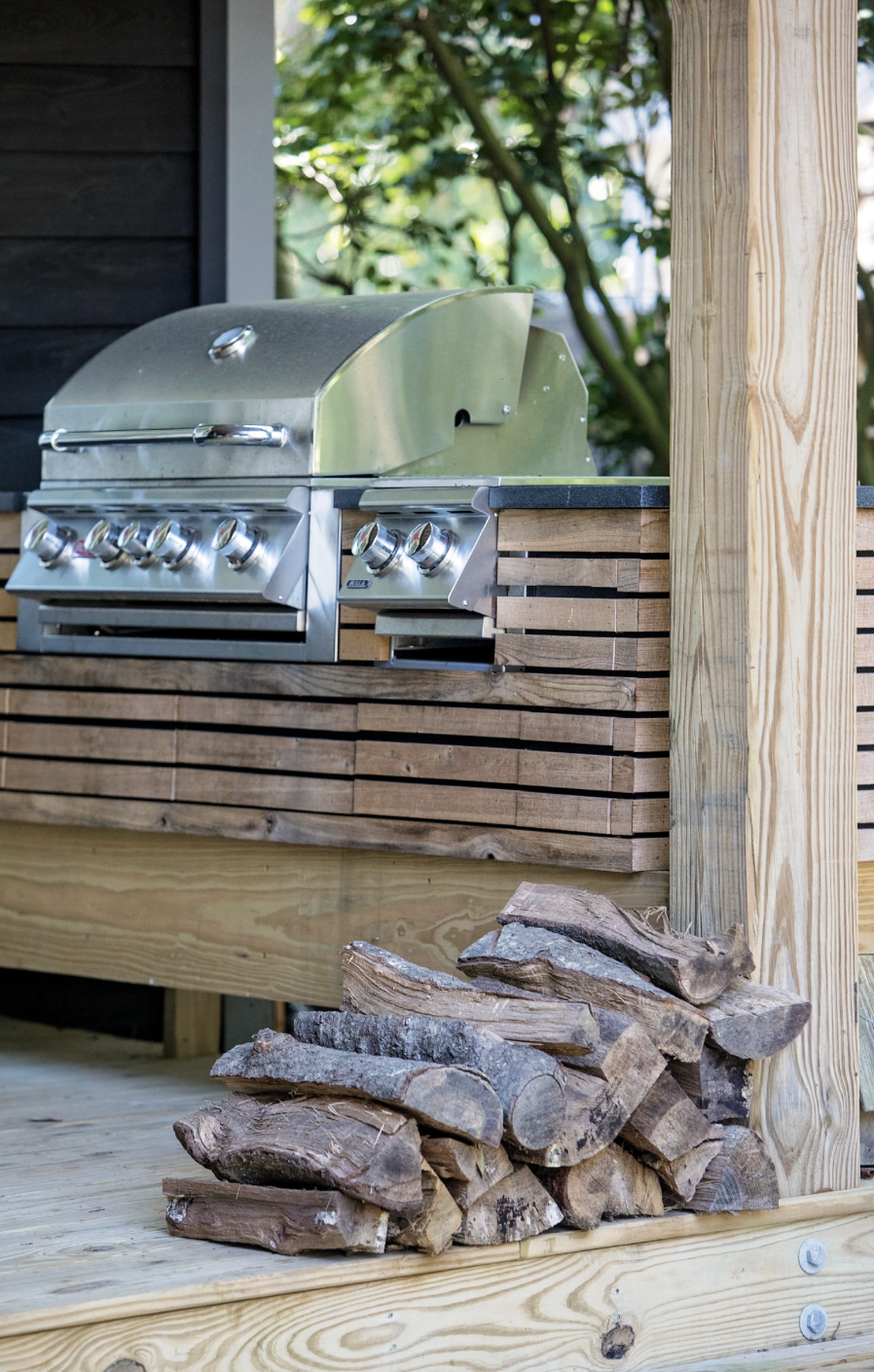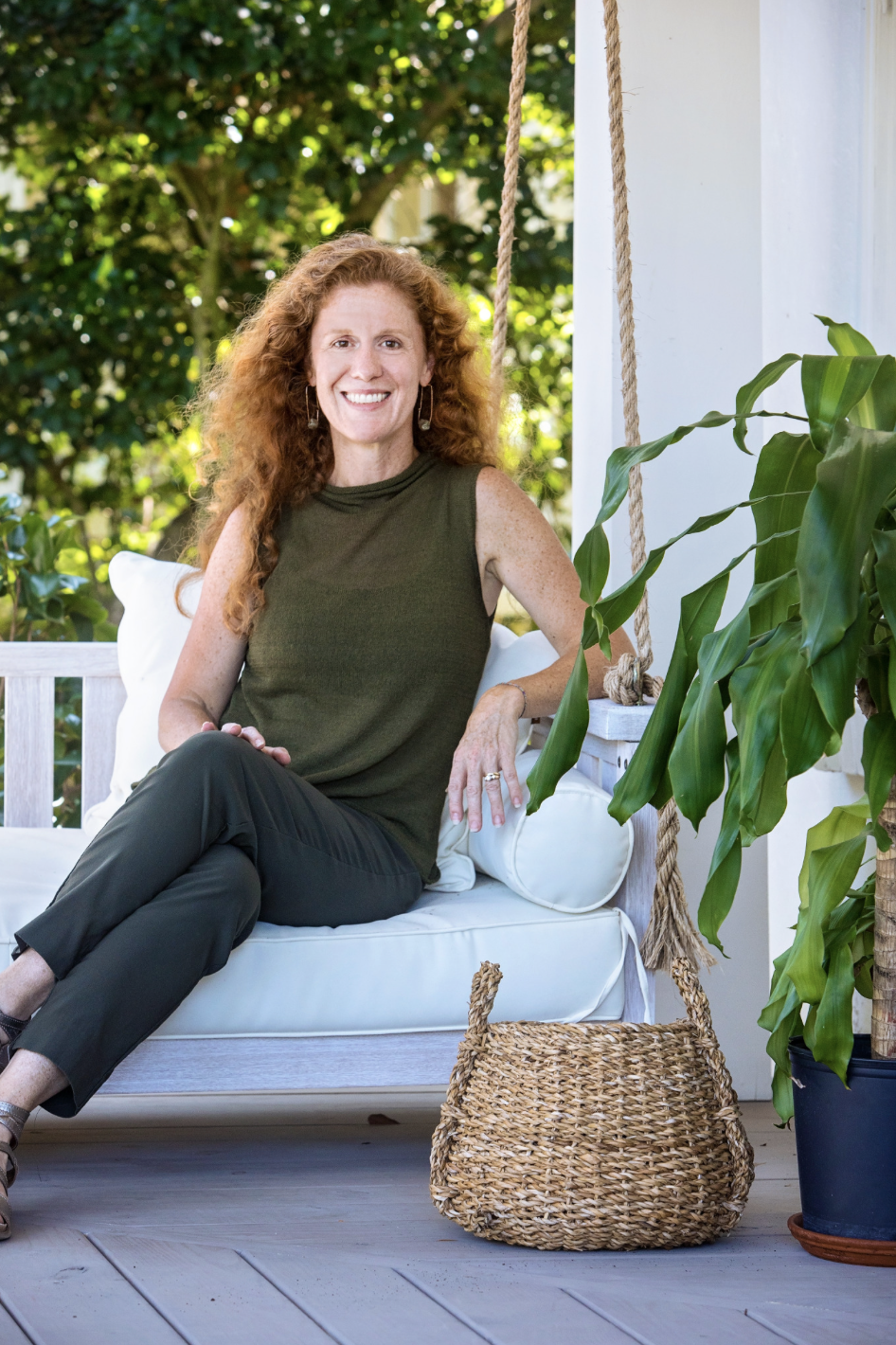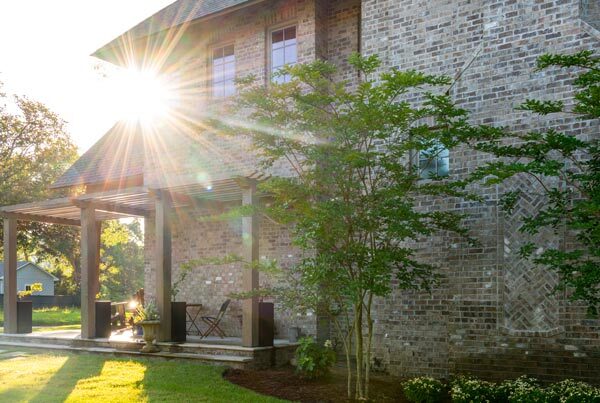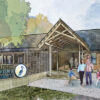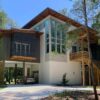Southern porches help reduce the cooling demand on houses in hot-humid climates through using passive strategies that work with natural surroundings.
In Portico Eastern Shore‘s article titled Creating the Perfect Fall Porch written by Frank Stickney, WATERSHED’s Rebecca Bryant gives practical advice on how to update existing outdoor living spaces to better complement their environment. When asked about what a warming climate means for our outdoor living spaces, Rebecca told Frank, “I think that porches are more important to have because of a warming climate. By buffering a house from the sun, they help reduce cooling demand. And I have new appreciation for how houses designed with good porches – shading and natural ventilation are much more resilient after a storm or in a power outage. We survived an extended HVAC outage last July by opening our windows and french doors to the screened porch. The “thermal chimney effect” is a great way to create air movement even if there is no wind – the hot air exhausts out the upper windows and draws cooler air in the lower ones. On the coast, we really need these passive strategies to keep people safe and buildings habitable after a storm event or during a power outage.”
Check out the whole article below for more of Frank and Rebecca’s discussion connecting the dots between the porch as a symbol of the past, and the porch as part of a resilient future.
Creating the Perfect Fall Porch: Making the Most of Your Outdoor Space
By: Frank Stickney | Photos by: Kate Reali
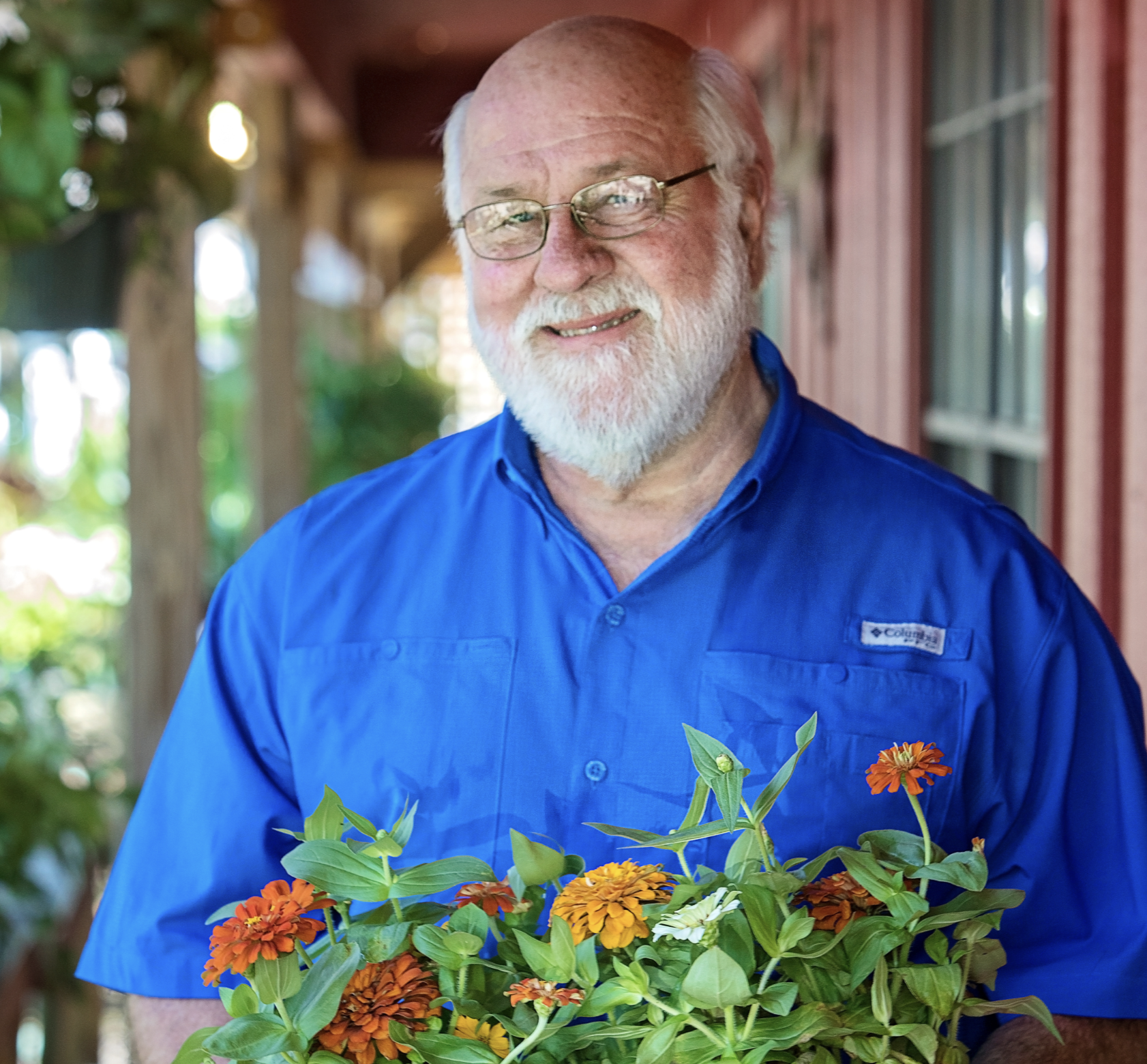 According to the calendar, fall has officially arrived. But those of us who live on the Eastern Shore know there’s plenty of heat still ahead. Though central air conditioning has made spending time in triple-digit less appealing, I aspire to reclaim the personal, social, and environmental benefits of bumping up the thermostat and getting back outside. Unfortunately, my front porch is little more than a place to retrieve a UPS package, and my deck a place where potted plants find a crisp brown grave. If I was serious about finding a solution to those problems, I’d need to escape the frigid interior of my home and hunt down some local professionals. I started my quest by reaching out to my friend Rebecca Bryant, an architect here in Fairhope. If you live on the Eastern Shore and want to make your home more livable, aesthetically pleasing, environmentally responsible, and in tune with its surroundings, you go to Watershed, the architecture and design firm of which Rebecca is the founder and principal architect. Even if you didn’t already know Rebecca was a “Living Building Ambassador”, “Passive House Consultant”, or “Permaculture Designer”, a visit to her home makes clear she’s a person with whom form and function are inexplicable.
According to the calendar, fall has officially arrived. But those of us who live on the Eastern Shore know there’s plenty of heat still ahead. Though central air conditioning has made spending time in triple-digit less appealing, I aspire to reclaim the personal, social, and environmental benefits of bumping up the thermostat and getting back outside. Unfortunately, my front porch is little more than a place to retrieve a UPS package, and my deck a place where potted plants find a crisp brown grave. If I was serious about finding a solution to those problems, I’d need to escape the frigid interior of my home and hunt down some local professionals. I started my quest by reaching out to my friend Rebecca Bryant, an architect here in Fairhope. If you live on the Eastern Shore and want to make your home more livable, aesthetically pleasing, environmentally responsible, and in tune with its surroundings, you go to Watershed, the architecture and design firm of which Rebecca is the founder and principal architect. Even if you didn’t already know Rebecca was a “Living Building Ambassador”, “Passive House Consultant”, or “Permaculture Designer”, a visit to her home makes clear she’s a person with whom form and function are inexplicable.
